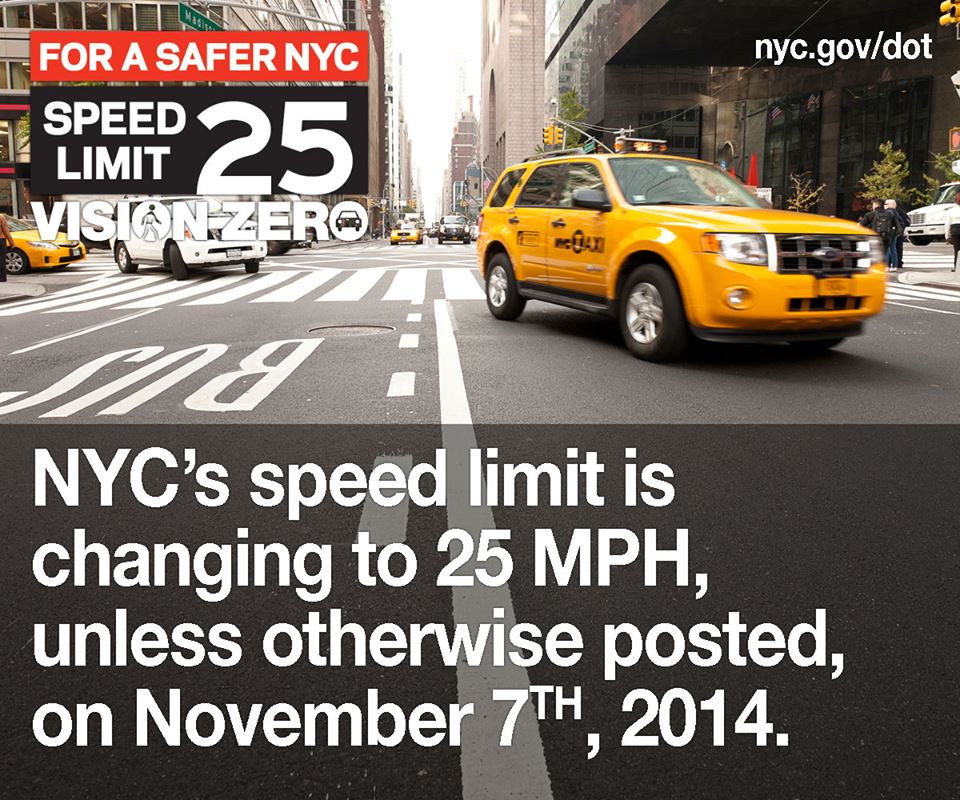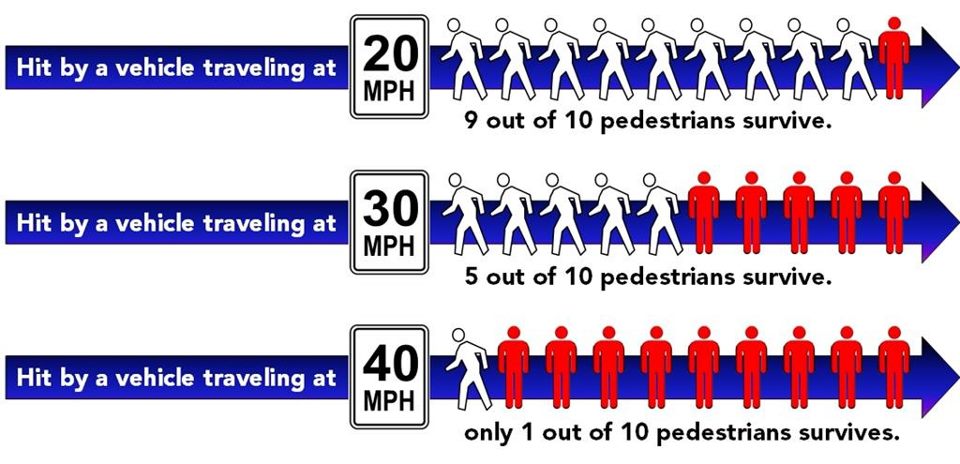
Last week, New York City’s citywide standard speed limit dropped from 30 mph to 25 mph under a policy dubbed “Vision Zero“. About 95% of streets in the city had previously been designated 30 mph, so this represents a huge shift in speed reduction for New York. Every year, New York streets see approximately 4,000 people injured and 250 people killed in traffic-related accidents. But, dropping the speed limit by 5 mph increases survivability of pedestrians by almost double. Serious injuries and deaths for drivers and passengers also plummet. Vision Zero isn’t just about reducing injuries and deaths through speed limit changes. Safe street design implementation, education campaigns, and active policing are parts of the overall policy effort.

In Seattle, we have standard arterial speed limits of 30 mph, residential street speed limits of 25 mph, and alleyway speed limits of 15 mph. Many streets in the city, however, exceed these standards by generous amounts. And, I noted last week, we have some bad street designs that could be improved.
It isn’t just Seattle that has a speed and safety problem. Plenty of suburban jurisdictions and other cities in the Puget Sound that have even higher permitted speeds for comparable streets and incredibly dangerous street designs. It’s an unfortunate problem, but one that’s entirely self-made and solvable. Given the recent spate of serious traffic collisons in Seattle, I think it’s time that we talk about pursuing our own set of Vision Zero policies to eliminate traffic-related deaths.
Stephen is a professional urban planner in Puget Sound with a passion for sustainable, livable, and diverse cities. He is especially interested in how policies, regulations, and programs can promote positive outcomes for communities. With stints in great cities like Bellingham and Cork, Stephen currently lives in Seattle. He primarily covers land use and transportation issues and has been with The Urbanist since 2014.



